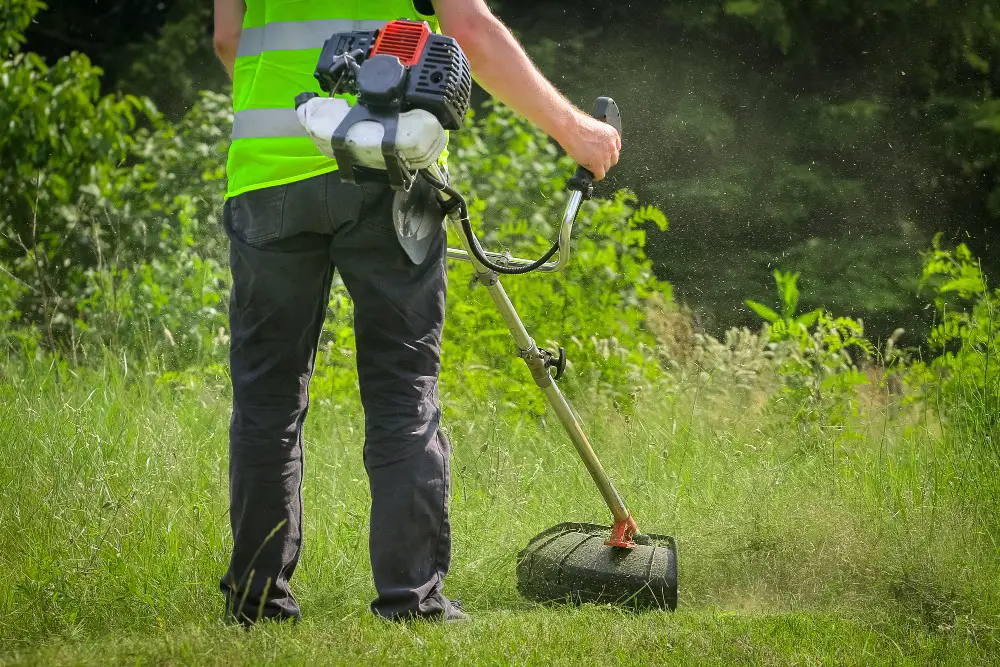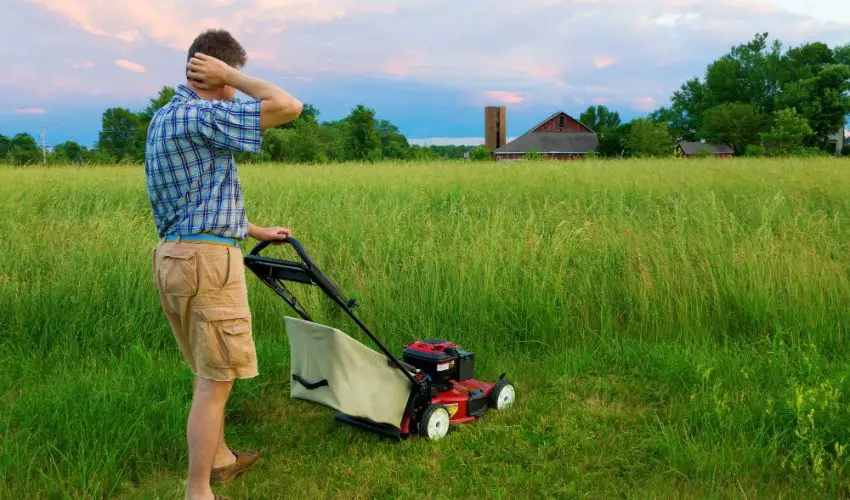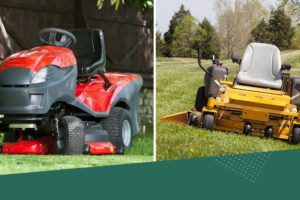Dealing with a lawn that’s gotten too long can feel like a big task. It seems like grass just keeps growing no matter what, getting taller even when we’re too busy to notice. Suddenly, your yard looks more like a wild field than the neat lawn you remember.
Table of Contents
ToggleYou might think about cutting it all down quickly, but there’s a better way to get your lawn looking good again without harming it.
From my experience, tackling an overgrown lawn requires a bit more patience and care. Cutting too much at once can shock the grass, leading to brown, unhealthy patches.
Preparing to Cut the Grass
Before you start mowing, there’s a bit of prep work that can make all the difference. I’ve learned that choosing the right day to mow is crucial.
Aim for a dry day because wet grass can clog your mower and make the job much harder.
Next, take a walk around your lawn. You’d be surprised at what can hide in tall grass. Look for any rocks, sticks, or debris that could get caught in the mower or become dangerous flying objects.
Clearing the area not only protects your equipment but also ensures you’re mowing safely.
Cutting an Overgrown Lawn: Step-by-Step
I usually cut down tall grass in three different steps:
Step 1: Initial Trimming
When you’re faced with grass that’s knee-high, your regular mower won’t be up to the task—at least, not at first. That’s where a string trimmer comes in handy.

I’ve found that using a string trimmer to initially reduce the height of the grass is a game-changer. It’s like giving your lawn a rough haircut before the actual styling begins.
Start by cutting down the grass about 50% of its current height. Don’t try to go too short too quickly.
The idea is to trim it down to a level that your lawn mower can handle without straining. This step might take a bit of time and effort, but it’s crucial for preventing damage to your mower and ensuring an even cut later on.
Step 2: The First Mow
After giving your lawn some time to recover from the initial trim—usually about a week—it’s time to bring out the lawn mower. This first mow is crucial for setting the stage for your lawn’s new look. Remember, the goal here is to reduce the grass height gradually, so your lawn can adjust without experiencing shock or stress.
Set your lawn mower to its highest setting. This might seem counterintuitive when you’re eager to cut down tall grass, but it’s essential for a couple of reasons.
First, it prevents the mower from getting bogged down in thick grass. Second, it ensures you’re not removing too much of the grass blade at once, which can stress and weaken the plants.
Step 3: Subsequent Mowing Sessions
Now that you’ve completed the first mow, your lawn is on its way to looking great, but it’s not quite there yet. The subsequent mowing sessions are where you’ll gradually get your lawn down to its ideal height and help it thicken up to that lush green carpet we all love.
For the next mow, wait another week. This gives your grass time to recover and grow a bit. This time, you can lower the mower setting, but remember the golden rule: never cut more than 30% of the grass blade length at a time.
Cutting more than this can stress the grass, making it more susceptible to diseases and pests.
Determining the Ideal Grass Height
Finding the perfect height for your lawn is key to maintaining its health and aesthetic appeal. The ideal height can vary depending on the type of grass you have, but there are general guidelines to help you make the best choice.
For most lawns, aiming for a grass height of about 2 to 3 inches is a good rule of thumb. This height helps promote a robust root system, which in turn supports a healthy lawn that’s more resilient to weeds, pests, and diseases. It also helps the soil retain moisture, reducing the need for frequent watering.
In my experience, adjusting your mower to leave the grass at about 2.5 inches has worked well. It’s a height that keeps the lawn looking neat and tidy while providing the benefits I mentioned. However, it’s important to adapt this guideline to your specific lawn and local climate. For example, if you live in a hot, dry area, you might want to leave the grass a bit longer to help protect the soil from the intense sun.
To Wrap Things Up
Taming an overgrown lawn might seem daunting at first, but with the right approach and a bit of patience, you can transform it into a beautiful, healthy outdoor space.
Remember, the key is to take it step by step: start with an initial trim, then gradually reduce the grass height over several mowing sessions, never cutting more than 30% of the grass blade at a time.





